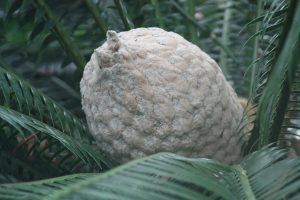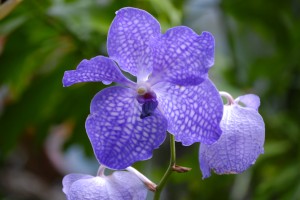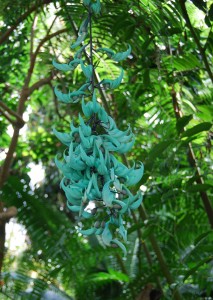Audio by David Mitchell from 2005
Here you will find plants from the opposite ends of the evolutionary scale. At the one end we have the primitive cycads, whilst at the other are orchids, some of the most sophisticated groups of plants.
Cycads were once a large group that would have dominated the flora around 65 million years ago, when dinosaurs walked the earth. The tough and often spiny leaves would have evolved as protection from grazing by dinosaurs. They are very long lived, one of the plants in this glasshouse is over 200 years old and was moved from our previous site at Leith Walk. Today there are around 250 species of cycad, found in Australia, South Africa, Mexico and South East Asia. Cycads have separate male and female plants with the cones for each sex quite different in appearance. Structures within these cones bear the pollen in male plants and large ovules in female plants, which will develop into seeds if fertilised.
In contrast to these ‘living fossils’ we have the orchids, one of the most sophisticated and diverse groups of flowering plants, with around 35,000 species. If you look around this glasshouse you will see some of the range of diversity displayed by this group, flowers can be almost any colour, size and shape. The interactions between some orchids and their pollinator can be very complex, with some mimicking their insect pollinator in shape, colour and scent. Most orchids are epiphytes (they grow on trees and other plants) and this makes them vulnerable as the forests they live in are destroyed.
As you walk through this house you will see numerous other weird and wonderful plants, including the curtains of Spanish Moss (Tillandsia usneoides), which is not a moss, but a Bromeliad, the same family as pineapple. You may also be lucky enough to come across the Jade Vine (Strongylodon macrobotrys), the turquoise colour of its flowers makes it hard to believe it’s not out of science-fiction!




1 Comment
1 Pingback